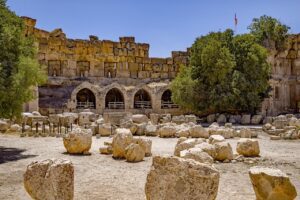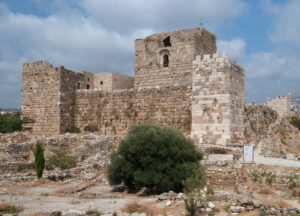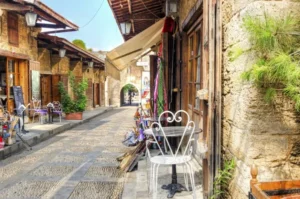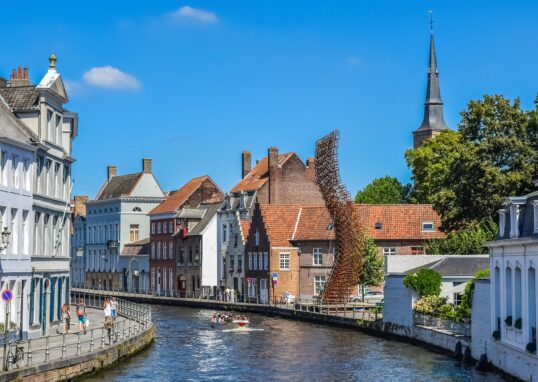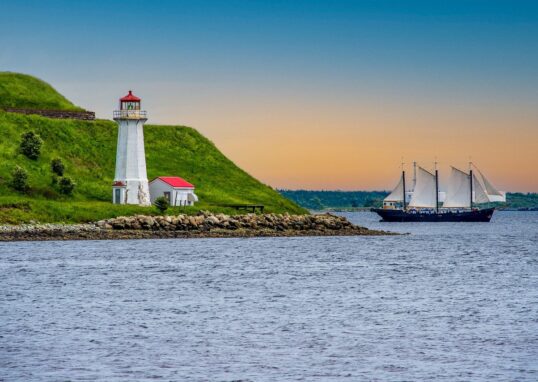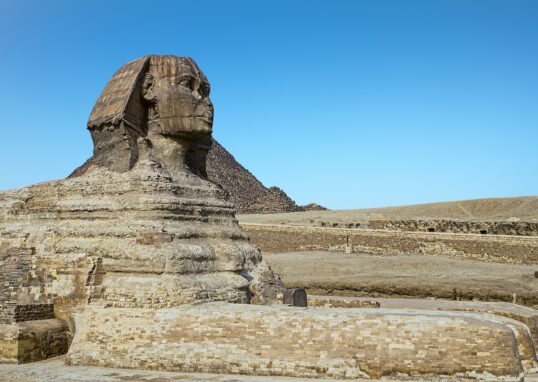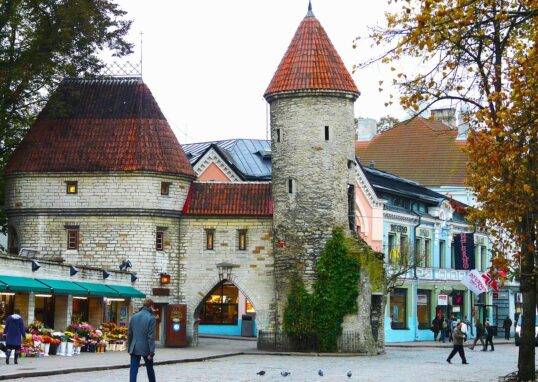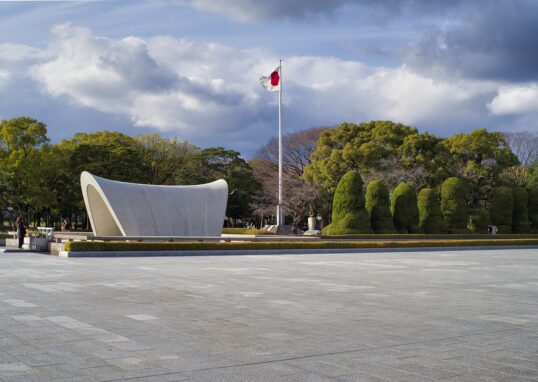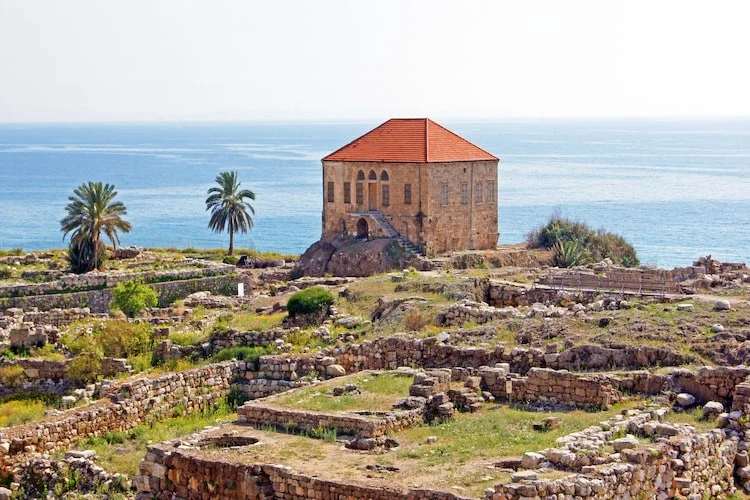
Byblos, Lebanon – The Eternal City of History and the Sea
Byblos, known locally as Jbeil, is the world’s oldest city. Situated on the Lebanese Mediterranean coast, about 40 kilometers north of the country’s capital, Beirut. Byblos has been continuously occupied for over 7,000 years. It is an open museum of civilizations that passed through, conquered, and left their mark over the centuries. Byblos is greater than just an archaeological site. It breathes with life, culture, and history. It is a city where the old and the new blend together so well. The remains of ancient temples lie side by side with modern-day cafes, galleries, and beach resorts. The Byblites are polite and take immense pride in their city’s heritage. Today, Byblos is a UNESCO World Heritage site, cherished for its bountiful past and immaculately preserved archaeological site. Visitors from all across the world flock here to see the old ruins, walk through the cobblestone alleys, and feel the sea breeze carrying the silences of thousand-year-old history. 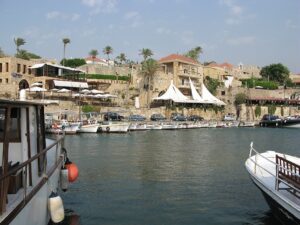
Ancient History of Byblos
Byblos was first occupied around 5000 BC in the Neolithic period. Archaeological evidence suggests there were primitive fishing villages that lived along the coast. Later, the town became an important city in the Bronze Age. The Phoenicians, the greatest sea culture, made Byblos their capital. Out of Byblos was the Phoenician alphabet, from which sprung all modern alphabets, spread all over the globe. The city’s name, “Byblos,” comes from the Greek term for “book,” for it was through this port that papyrus (paper used in ancient times) was shipped to Greece. Byblos was an important trading point in the past. Egyptian, Greek, and Cypriot vessels docked at this place, on which gold, wood, and papyrus were loaded. The sacred Cedars of Lebanon were also exported from Byblos to Egypt to build temples and ships.
The Temple of Baalat Gebal, constructed circa 2700 BC, was consecrated to the Byblos goddess. She was the city’s protector. Kings, merchants, and priests who came with offerings and presents visited the temple. Later, Byblos was ruled by many empires — Egyptians, Assyrians, Babylonians, Persians, Greeks, and Romans. All the empires left behind traces of their architecture, language, and culture. Byblos became a city of layers, and every era was built on top of the last one.
The Medieval and Crusader Period
Byblos continued to flourish during Byzantine and Crusader periods. In the 12th century, the Crusaders arrived and built an amazing fortress, now known as the Byblos Castle. The castle, made of limestone The most famous among them is the Crusaders-built St. John the Baptist Church that was built around 1115 AD. The church is still functional today and holds weddings and religious ceremonies. Its simple stone structure and humble bell tower are reflective of medieval architecture. In the wake of the Crusaders, Byblos came to fall within Mamluk and Ottoman control. Wars and power changes aside, the city remained a functioning port and trading station.
Byblos in Modern Times
Byblos began to develop into a modern town in the 20th century without sacrificing its historic center. Excavations commenced during the early stages of the 1900s under the guidance of French archaeologist Pierre Montet, who uncovered much treasure from the days of ancient Phoenician times. Byblos is today a leading tourist attraction in Lebanon. It attracts local and international tourists. Its historic harbor, ancient ruins, traditional souks (bazaars), and seashore restaurants offer a laid-back and charming ambiance. Byblos has also emerged as a culture hub. The Byblos International Festival, held during the summer, welcomes renowned musicians and artists who play under the night sky with the sea as a backdrop.
Main Attractions in Byblos
The Ancient Ruins
The crown jewel is the Byblos Archaeological Site. Individuals may walk through ancient ruins that are thousands of years old. The site includes the Temple of Baalat Gebal, Temple of the Obelisks, Royal Tombs, and the Roman Theater. The Temple of the Obelisks is one of the most impressive places. It was built around 1600 BC and has dozens of high obelisks made of stone, one for each god. The complex gives a good idea of the city’s religious life long ago.
Byblos Castle
The Crusader Castle dominates the ancient city. The castle was built in the 12th century using the stones from the ruins of the ancient city. You are able to see the Mediterranean Sea, the ancient harbor, and the archaeological site at the top. Inside the castle is a small museum with ancient equipment, jewelry, and pottery.
The Old Harbor
The Byblos Harbor is an extremely ancient port still in operation today. It was the Phoenician trade commercial center. Today it is a peaceful and scenic spot lined with fishing boats, restaurants, and cafes. To view a sunset there is one of the most gratifying things to do in Byblos.
The Souk (Old Market)
The Byblos Old Souk is a network of narrow lanes with tiny shops. You can buy souvenirs, ornaments that are handmade, carpets, and handicrafts that are traditional. The colorful stalls, ancient arches, and cobblestone streets make it lovely to walk around.
Religious Buildings
The St. John the Baptist Church is one of Lebanon’s oldest churches. The Mosque of the Sultan Abdul Majid, built in Ottoman times, testifies to the religious tolerance of the city.
Culture and Lifestyle
Byblos boasts calm and welcoming residents. Arabic is the dominant language, though French and English are also widely spoken. Christian and Muslim communities live together within the city. Food supports life here. Restaurants serve Lebanese dishes such as tabbouleh, hummus, charred meats, and fresh fish. Eating by the sea is a local tradition. Concerts, festivals, and art events are part of regular local culture in Byblos. Byblos International Festival is a vibrant city fixture during summer months with artists from all over the world.
Nature Around Byblos
Natural surroundings abound in Byblos. The city has a good climate all year round, thanks to the Mediterranean Sea. Beaches are packed with tourists in summer. Mountains covered in snow can be sighted in winter. Next to it flows the Adonis River (Nahr Ibrahim), flowing from the mountains to the sea. It was in this place, according to ancient myth, that the god Adonis died, and every spring the red-colored waters of the river symbolized his renewed birth. Tourists may hike along the riverbank and enjoy waterfalls and green valleys.
Surrounding Places and Attractions
Byblos, a city that is among the world’s oldest and longest continuously inhabited ones, lies on the Lebanon coast. Even if Byblos itself is full of history, culture, and natural beauty, the environs also contain many great places to see. From ancient ruins and holy sites to mountain villages and seaside towns, the environs of Byblos contain a diverse and rich tourist experience. Here’s a closer look at the most fascinating surrounding areas and attractions around Byblos.
Jounieh – The Vibrant Coastal City
Approximately 20 landmarks south of Byblos, Jounieh is a lively seashore town known for its beach, nightlife, and breathtaking bay views. It has grown from a small fishing village to one of Lebanon’s top tourist spots. Jounieh Bay is compared to the Riviera, with its emerald blue waters and picture-like mountainous scenery. Travelers may ride the teleferique (cable car) from Jounieh to Harissa with the coast view from atop. The city boasts modern marinas, shopping malls, and fine dining restaurants with Lebanese as well as international cuisine. At night, under cover of darkness, the waterfront nightlife brings to the area nightclubs, bars, and casinos, where Jounieh is the first choice for entertainment hunters.
Harissa – The Sacred Hill
Above Jounieh stands Harissa, a magnificent religious and spiritual monument. Here the Our Lady of Lebanon statue stands, a massive white shrine that fills the bay. The shrine is 8.5 meters high and is a symbol of peace and guardianship of Lebanon. Tourists and pilgrims come to Harissa to view the religious monument and enjoy the stunning view. Saint Paul Basilica, which is nearby, is also a work of architecture, decorated with mosaics of biblical episodes. The peace and pine groves of Harissa offer a peaceful refuge from city noise below.
Jeita Grotto – A Natural Wonder
About 18 kilometers to the northeast of Byblos lies Lebanon’s most stunning natural wonder, Jeita Grotto. Two interconnected limestone caves of nine-kilometer length comprise the grotto. Towering above, the upper grotto features stalactites and stalagmites lit with warm lights, creating a magical underground world. The lower one can be explored on a boat along a peaceful, crystal-clear river. Jeita Grotto is a New Seven Wonders of Nature candidate and remains one of Lebanon’s top tourist destinations. The caves are surrounded by lovely gardens and a small cable car system that runs connected to them, ferrying tourists from the gateway to display spaces.
Batroun – The Ancient Coastal Gem
North of Byblos, 30 kilometers, stands Batroun, the oldest Mediterranean city. This is a beautiful seaside town renowned for its archaeological ruins, beaches, and relaxed lifestyle. The Phoenician sea wall built thousands of years ago to protect the city against the sea stands to date as proof of Batroun’s ruggedness. Visitors can walk down the Old Souk, where old stone houses stand opposite one another on narrow streets. Saint Stephen’s Cathedral, with its fine but unadorned architecture, bears witness to the town’s rich Christian history. Batroun is also famous for lemonade, a local beverage made from freshly squeezed lemons. Adrenalin junkies will appreciate snorkelling, paddleboarding, and cycling along the coastline, while foodies will indulge in seafront restaurants serving up fresh seafood and mezze.
Tripoli – The Northern Jewel
Approximately 60 kilometers north of Byblos is the second-largest city in Lebanon, the medieval jewel of Tripoli. It has its citadels, mosques, and ancient bazaars, each with the superimposed layers of Mamluk and Ottoman history. The Raymond de Saint-Gilles Citadel, dating from the Crusader period, gives a glimpse of the city’s ancient defenses. The Tripoli Old Souks are renowned for handcrafted soaps, copper items, and sweets such as halawet el-jeben. A stroll along the narrow streets introduces the fragrance of spices, the noises of artisans engaged, and the hospitality of old times. The Rachid Karami International Fair, a modernist architectural marvel built by the architect Oscar Niemeyer, is located nearby.
The Qadisha Valley and Bcharre
The serene beauty of the valley, combined with its historicity, makes it an absolute wonder to behold for nature lovers and history enthusiasts alike. Close to the valley is Bcharre, where the famous poet Kahlil Gibran was born, author of The Prophet. His old monastery home houses the Gibran Museum where he displays his paintings, writings, and personal effects. It is also near the Cedars of God, a few remaining stands of ancient cedar trees that once blanketed Mount Lebanon.
Faraya and the Lebanese Mountains
For those outside of Lebanon who wish to explore outdoor activities, 90 kilometers from Byblos lies Faraya, with its entirely different experience. Faraya is found in the Mount Lebanon mountain range and is famous for its skiing resorts and mountain resorts. During the winter months, visitors flock here to enjoy skiing, snowboarding, and snowshoeing. During the summer months, the terrain is a paradise for hiking, ATV excursions, and bicycle tours. Faqra Roman Temple, which is nearby, has impressive ancient ruins, including Roman altars and columns. The scenery with snow-capped mountains, temples of stone, and green valleys makes the place one of Lebanon’s most scenic.
Beirut – The Capital of Lebanon
Only 40 kilometers south of Byblos is Beirut, Lebanon’s busy capital and cultural hub. It is a city of contradictions where skyscrapers of contemporary design stand alongside Ottoman and French colonial architecture. The Beirut Corniche is a waterfront promenade with a lovely view ideal for a leisurely walk and sunset viewing. The National Beirut Museum gives the reader a close-up look at Lebanon’s archaeological history through artifacts from the Phoenician, Roman, and Byzantine eras. The city’s Gemmayzeh and Mar Mikhael districts are packed with art galleries, cafes, and night life spots, a testament to Lebanon’s city vitality. Beirut is also renowned for food. There is mezze Lebanese, international cuisine, every meal a story of cultural mixture and hospitality.
Annaya and Saint Charbel’s Monastery
Located about 25 kilometers from the city of Byblos, Annaya is a peaceful mountain village renowned for the Monastery of Saint Maron and the Hermitage of Saint Charbel. Saint Charbel is Lebanon’s most beloved saint, admired for his miracles and austerity of life. Pilgrims visit to honor his tomb, praying and seeking blessings. The monastery campus is surrounded by pine forests and has peaceful walking paths. It is a very religious setting, and travelers tend to refer to it as a place of peace and reflection.
Amioun and Koura District
Amioun, the district capital of Koura District, is situated to the northeast of Byblos. The area is famous for olive farms and authentic Lebanese villages. Amioun itself has some old Byzantine churches and some very pretty scenery. Locals take visitors to farms, experience fresh cold-pressed olive oil, and ride along beautiful mountain roads with amazing vistas of the seashore and valleys below.
Tourism in Byblos
Byblos is among the safest and friendliest places in Lebanon. It enjoys a combination of sea, history, and modern recreation that is loved by all visitors. The Byblos Port Area enjoys hotels, boutique guesthouses, and seaside resorts. Day trips from Beirut are common, but staying for a couple of days allows tourists to fully experience the magic of the city. Evening walking through historic streets illuminated by streetlamps is enchanting. Shopping in the ancient souk, dining out along the harbor, and exploring the ancient ruins make Byblos a historic treasure trove for history enthusiasts and tourists alike.
The Spirit of Byblos
Byblos stands out because it is full of timelessness. The city witnessed empires rise and fall but survives. Its people kept its past intact for thousands of years. Byblos has been called the “City of the Book” due to its role in the diffusion of writing and communication. Its port once brought together the ancient world, and today it brings together individuals from around the globe through tourism and culture.
Conclusion
Byblos, Lebanon, is more than the sum of its old stones. It is history, civilization, and continuity in human form. From the Crusader fortress to Phoenician temples, from the peaceful harbor to the crowded souks, every corner has a secret. Surrounded by majestic mountains, green valleys, and the glittering Mediterranean Sea, Byblos offers visitors the chance to see the beauty of Lebanon yesterday and today. Whether for history, culture, or relaxation, Byblos will always leave you at peace and amazed — that same feeling of wonder that has been known by travelers here for thousands of years.

